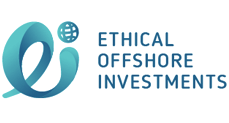Recession, correction, rally – an investor guide to market volatility
Chris Salih – FundCalibre
7 August 2024

The first seven months of 2024 have seen robust gains in the stock market, with global equities up some 13%* off the back of positive economic indicators and the continued anticipation of interest rates cuts by the US Federal Reserve.
Mega-cap technology stocks, such as Nvidia, have continued to make strong returns, while traditionally defensive stocks like utilities and gold outperformed. It’s not been completely smooth sailing as small-caps across the globe have lagged, while interest rate predictions have continually been pushed back due to the resiliency in markets – something which has kept investors on their toes.
But crucially, volatility has remained low. The VIX index is a calculation designed to produce a measure of constant, 30-day expected volatility of the US stock market. A number greater than 30 is considered to signal heightened volatility from increased uncertainty, risk and investor fear. VIX values below 20 generally correspond to more stable, less stressful periods in the markets. For much of 2024, it has been below 20 (it has had an average closing price of 14)**.
But the recent sell-off has seen this change markedly. The VIX reached its highest level on Monday (August 5) since the height of Covid in March 2020 as global equities fell sharply**. It briefly broke above 65 on Monday morning, up from about 23 on Friday and roughly 17 a week earlier – a reflection of the volatility in markets. It has since dropped back down to 23 as of writing (August 7)**.
What caused this latest bout of volatility in global markets?
Disappointing jobs data from the US at the back end of last week acted as a catalyst for the sell-off, with investors fearing that the Federal Reserve made a mistake by keeping interest rates unchanged, potentially pushing the world’s largest economy towards recession.
Stock markets were already worried about high borrowing costs and unsettled by signs that a long-running rally in share prices, fuelled in part by optimism over artificial intelligence, might be running out of steam.
The start of this week saw most global markets fall sharply. Japan’s market plummeted to its biggest fall by points in history on Monday***, before subsequently recording a record rise the following day (August 6). The UK, Europe and Asia also saw markets tumble amid the uncertainty.
Most markets have since stabilised and begun to recoup some of those losses, but there remains significant uncertainty about the US economy, with analysts now expecting the US Federal Reserve to cut interest rates sooner to stave off the threat of recession.
Regardless of whether we are out of the woods or not, volatility can be an unnerving time for investors, and can lead to knee-jerk emotional reactions we can often regret. Investing based on emotion really is one of the biggest mistakes anyone can make, particularly in uncertain times.
With recession still a possibility and geopolitical uncertainty rife, more volatility may be on the way – with this in mind here are a few ways to handle these challenging periods.
1. Focus on long-term goals
Short-term volatility doesn’t always affect the long-term growth of your investment. So, it may help to focus on those long-term goals during volatile periods.
It sounds silly to say, but recessions do not last forever. According to NBER data, the average US recession lasted about 17 months in the period from 1854 to 2020. In the post-World War II period, from 1945 to 2020, the average recession lasted about 10 months. Riding these short-term fluctuations could bring positive returns when you look further ahead^.
2. Time in the market – not timing the market
It is important to realise you are only making losses if you crystallise them. It can help to think of any falls in value as ‘paper losses’. Staying invested gives you more time to recover and grow those assets.
Time in the market – not timing the market – is essential for those who want to maximise their long-term goals.
Over 35 years (1986-2021), mistimed decisions on an investment of just £1,000 could have cost you almost £33,000-worth of returns. Research from Schroders examined the performance of three indices that reflect the performance of the UK stock market – the FTSE 100, the FTSE 250 and the FTSE All-Share^^.
If, at the beginning of 1986, you had invested £1,000 in the FTSE 250 and left the investment alone for the next 35 years, it might have been worth £43,595 by January 2021^^. However, the outcome would have been very different if you had tried to time your entry in and out of the market.
During the same period, if you missed out on the FTSE250 index’s 30 best days, the same investment might now be worth £10,627, or £32,968 less^^, not adjusted for the effect of charges or inflation.
Between 1986 and 2021 your original £1,000 investment in the FTSE 250 could have made:
- 11.4% per year if you stayed invested the whole time
- 9.5% per year if you missed the 10 best days
- 8.1% per year if you missed the 20 best days
- 7% per year if you missed the 30 best days
3. Balance and diversification
Investment portfolio diversification is a tried-and-true strategy that aims to strike the right balance between risk and reward. It sounds simple in practice – but is something which can easily be forgotten when markets are doing extremely well or struggling.
By combining different types of investments, you could potentially lower your overall risk of loss. That’s because a lower return in one type of asset, like equities, may typically be compensated by a gain in another type, such as bonds. There are also plenty of multi-asset funds to consider which invest in the likes of property, commodities, infrastructure and more.
Funds to consider
With the direction of markets looking distinctly uncertain – here are a few funds to consider for various approaches to risk and return.
Capital preservation
There are a couple of routes to take here. The first would be a fund with lower volatility. A good example would be JOHCM Global Opportunities. Manager Ben Leyland has a strong bias towards larger and medium-sized multi-national businesses in his portfolio, which typically holds 30-40 stocks. The philosophy of this fund is ‘heads we win, tails we don’t lose too much’, and if markets do struggle, the fund’s strict valuation process will help in this regard. The fund also can, and will, hold large cash positions if valuations are unattractive.
Others to consider include absolute return vehicles like WS Ruffer Diversified Return, which is already defensively positioned on markets and holds a number of uncorrelated assets.
Going global
For full exposure to the market, investors could look to global funds with a focus on pricing power (the ability to pass on pressure to their end customer). These quality businesses are usually able to grow in periods of uncertainty.
Funds to consider here include the IFSL Evenlode Global Income fund. The managers take a long-term approach, focusing on quality, cash-generative businesses. They define quality companies as those with three characteristics: asset-light business models; high barriers to entry which can’t be disrupted easily; and finally, their customers’ decision to buy their product or service should not be determined completely by price. An alternative would be the Murray International Trust, which is an international portfolio of global equities while also having the flexibility to invest in fixed income. The trust is also trading on an attractive discount of 9.2%^^^.
Diversification – multi-asset funds
Those looking for a multi-asset solution might consider the Orbis Global Balanced fund, which scours the world for the best investment opportunities across a number of asset classes including equities, fixed income and commodities.
An alternative would be the M&G Episode Income fund. The name ‘episode’ refers to those periods of time when investors’ emotions cause them to act irrationally and thereby open up opportunities for those who can put their emotions aside. Manager Steven Andrew uses behavioural finance to find pockets of value and invest against the herd, rather than following it.
*Source: FE Analytics, total returns in pounds sterling, from 1 January to 31 July 2024
**Source: Macrotrends, VIX Volatility Index
***Source: BBC, 5 August 2024
^Source: Forbes Advisor, 15 August 2023
^^Source: Schroders, 2 June 2021
^^^Source: AIC, 5 August 2024
Please Note:
This article was first published by Fund Calibre and is provided for information only. The views of the author and any people quoted are their own and do not constitute financial advice. The content is not intended to be a personal recommendation to buy or sell any fund or trust, or to adopt a particular investment strategy. However, the knowledge that professional analysts have analysed a fund or trust in depth before assigning them a rating can be a valuable additional filter for anyone looking to make their own decisions. Past performance is not a reliable guide to future returns. Market and exchange-rate movements may cause the value of investments to go down as well as up. Yields will fluctuate and so income from investments is variable and not guaranteed. You may not get back the amount originally invested.
Please speak to Ethical Offshore Investors or your personal adviser BEFORE you make any investment decision based on the information contained within this article.
At Ethical Offshore Investments, we can access the funds mentioned in this article on the various offshore investment platforms we offer. We do NOT CHARGE any additional entry and/or exit fees to purchase these funds for our clients.
As we aim not to use commission paying funds, we will access the lowest charging version of the managed fund that is available on the relevant platform…… resulting in more of the investment growth staying in your pocket.
Speak with Ethical Offshore Investments to learn how you can save on your investments costs
Socially Responsible Investing – Ethical Business Standards
